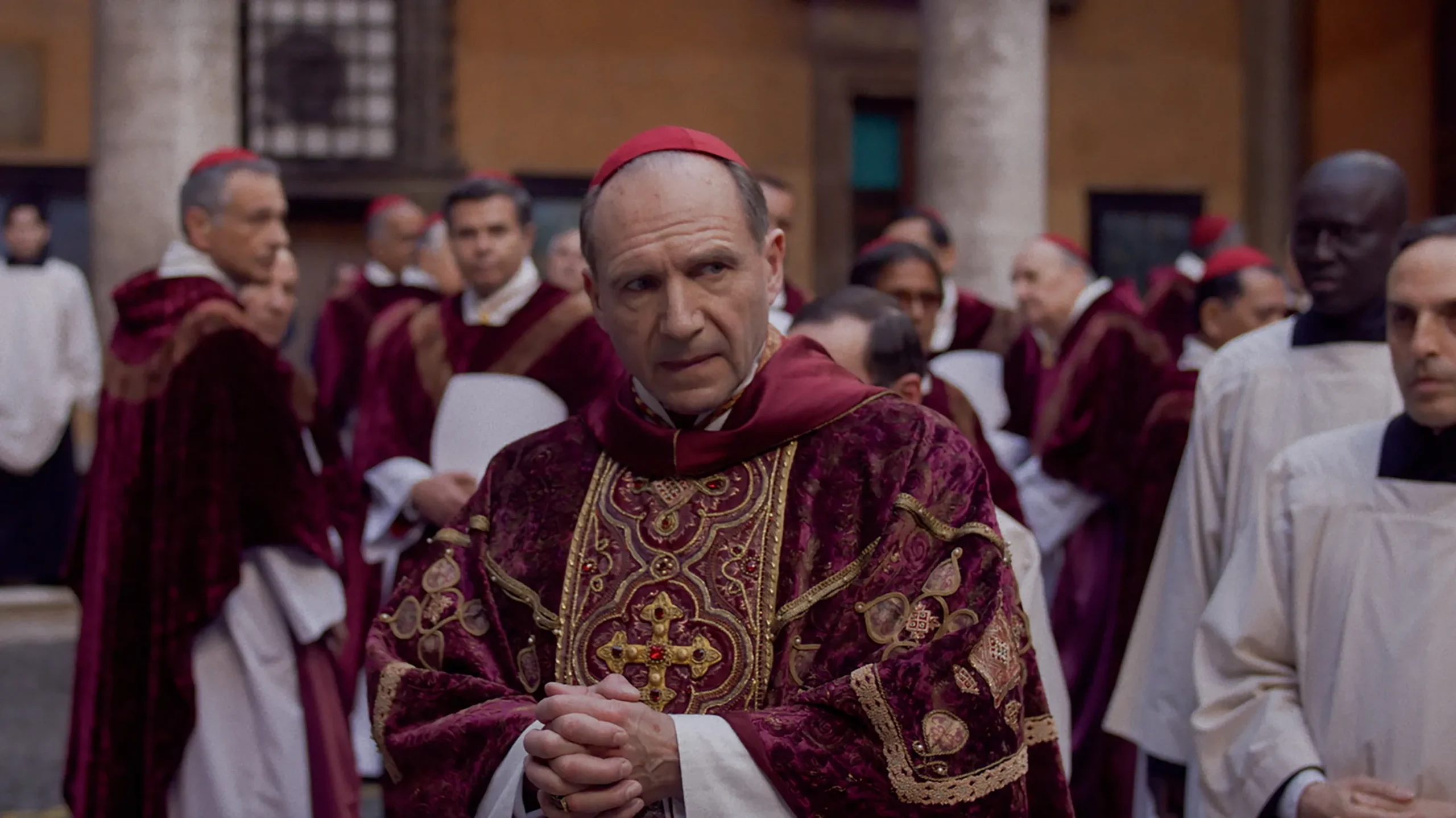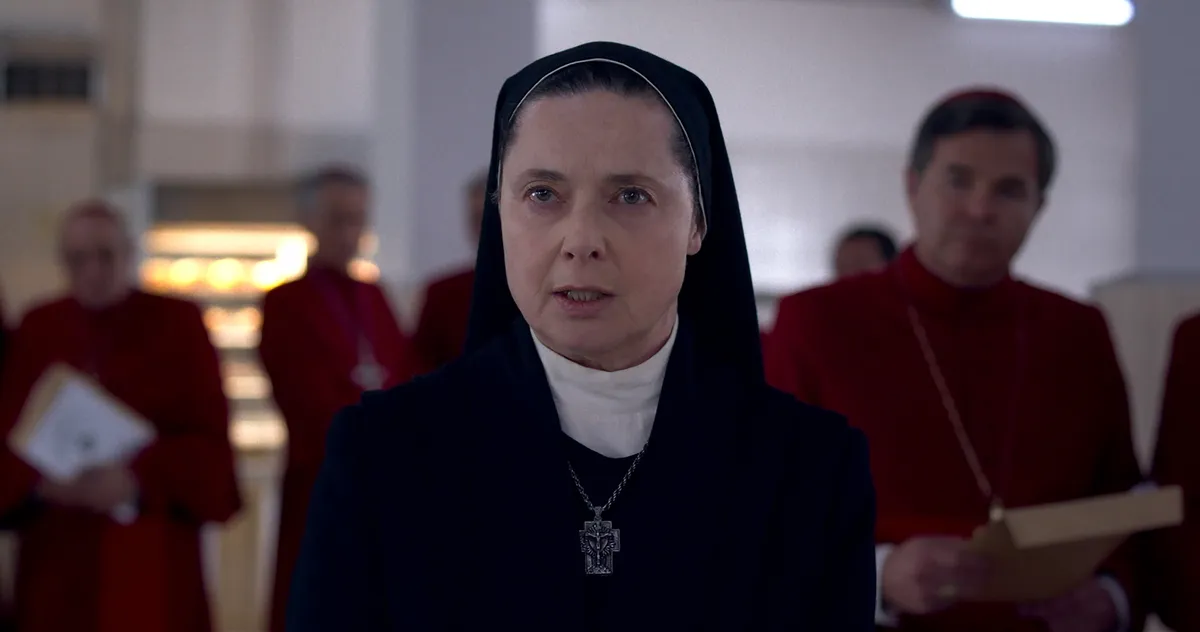The film Conclave, directed by Edward Berger and adapted from Robert Harris’ novel, delivers an unexpected and thought-provoking twist in the setting of a Vatican election. While audiences might not anticipate high-stakes drama in the selection of a new pope, the film skillfully showcases the intense political maneuvering and ideological battles within the Catholic Church.
At the heart of the story is a struggle between progress and tradition, with the ending providing a shocking yet meaningful revelation that underscores this central conflict. Through its portrayal of backroom dealings and surprising character arcs, Conclave reveals the human complexities behind an institution known for secrecy and tradition.
Ralph Fiennes stars as Cardinal Lawrence, the dean of the College of Cardinals, who is responsible for overseeing the papal election following the sudden death of the pope. Lawrence initially backs Cardinal Bellini (Stanley Tucci), a progressive figure, but soon finds himself navigating a complex landscape of ideological rivals.
Cardinal Tedesco (Sergio Castellitto) represents the hardline conservatives, believing the Church has become too liberal, while Cardinal Adeyemi (Lucian Msamati) holds extreme views on LGBTQ+ issues. Meanwhile, Cardinal Tremblay (John Lithgow) positions himself as a contender, though his ambition outweighs any firm beliefs. This mix of personalities sets the stage for a dramatic and unpredictable election process.

A Secret Appointment and Shocking Revelation Reshape the Vatican’s Papal Election Process
An unexpected participant shakes up the conclave: Cardinal Benitez (Carlos Diehz), an archbishop from Kabul whose appointment was kept secret by the late pope. This revelation leaves the other cardinals scrambling for information about him. Lawrence, aided by his assistant Monsignor O’Malley (Brían F. O’Byrne), uncovers that Benitez nearly resigned due to undisclosed health issues.
As the conclave proceeds, voting patterns shift unpredictably, exposing scandals that disqualify leading candidates. Adeyemi falls due to a past affair with a nun, while Tremblay is revealed to have bribed other cardinals, ultimately discrediting him as well. As candidates drop out, an unexpected shift leads to Benitez emerging as the strongest contender.
The conclave reaches its climax when Benitez delivers a moving speech against hatred and religious intolerance, positioning himself as a unifying figure. His message, emphasizing the Church’s future over rigid traditions, resonates with the cardinals, leading to his election as pope.
However, just as Benitez chooses his papal name, Innocent, O’Malley uncovers a shocking truth about his medical history. Confronted by Lawrence, Benitez reveals that he was born intersex, possessing a uterus and ovaries despite being raised and identifying as a man. This revelation challenges the Church’s deeply ingrained gender norms, raising theological and ideological questions about identity and divine will.

Embracing Ambiguity as Conclave’s Intersex Pope Challenges Tradition and Redefines Faith
Benitez’s intersex identity serves as a thematic focal point, reinforcing Conclave’s exploration of uncertainty and change. The film aligns this revelation with Lawrence’s earlier statement that “certainty is the enemy of unity and tolerance.” By embracing ambiguity and complexity, Benitez’s election represents a shift towards inclusivity within the Church, even if unintentionally.
While some may view the twist as a mere shock tactic, the film presents it as a thoughtful challenge to tradition. The idea that the new pope exists “between certainties” suggests a broader commentary on faith itself—one that acknowledges imperfection and evolution rather than rigid dogma.
While Conclave treats Benitez’s identity with nuance, the twist inevitably enters the broader discourse on gender representation in film. The portrayal of an unexpected gender reveal has a complicated history in cinema, often being used for shock value or as a means of villainizing characters.
However, the film differentiates itself by presenting Benitez’s intersex identity as a divine gift rather than a source of deception or horror. By doing so, Conclave attempts to engage with modern discussions on gender while maintaining the integrity of its religious themes. Still, the film’s reception among trans and intersex critics will likely determine whether its portrayal is seen as progressive or problematic.
Beyond its dramatic twists, Conclave ultimately suggests that the Catholic Church stands at a crossroads between tradition and necessary reform. While the election of an intersex pope is fictional, the film subtly engages with real-world debates within the Church, such as the role of women and the acceptance of LGBTQ+ individuals.
Though Conclave does not explicitly endorse progressive reforms, it acknowledges that the Church cannot remain stagnant. By the film’s conclusion, it is clear that while resistance to change remains strong, the world—and by extension, the Church—inevitably moves forward. This final message, whether seen as hopeful or controversial, ensures that Conclave leaves a lasting impact on its audience.



